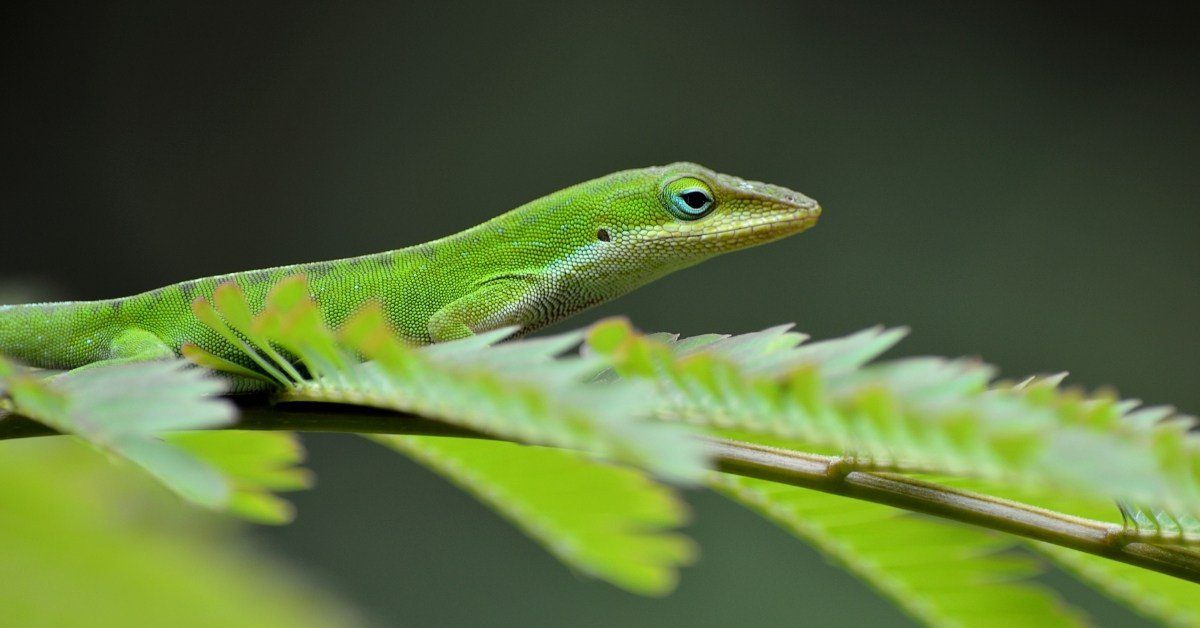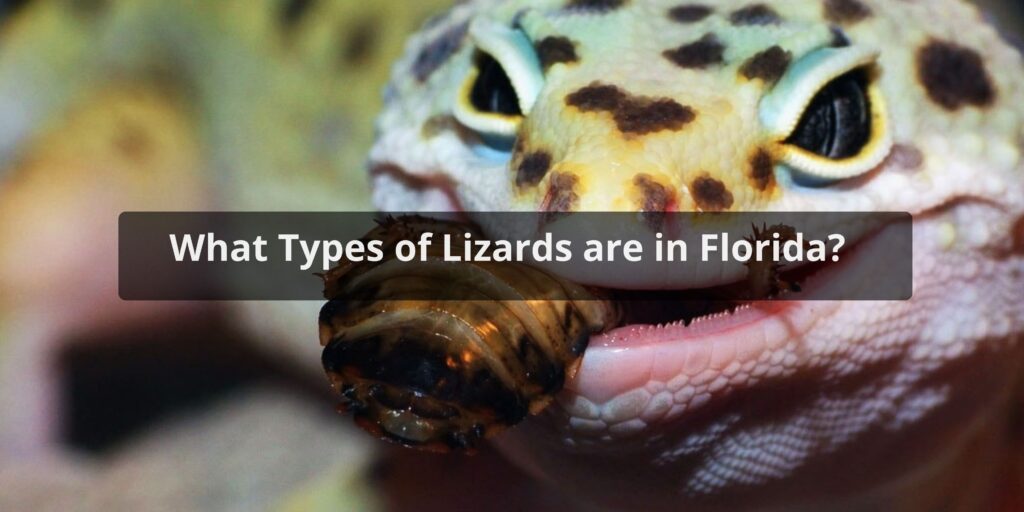Florida is home to a diverse array of lizards, ranging from tiny geckos to imposing iguanas. With its subtropical climate and variety of habitats, the Sunshine State provides the perfect environment for over 20 species of native and introduced lizards. Here is an overview of some of the most common lizards found across Florida.
Green Anoles

The green anole (Anolis carolinensis) is one of the most ubiquitous lizards in Florida. These small, slender lizards reach 5-7 inches in length and come in a variety of shades of green, ranging from bright kelly green to dull olive. They have a pinkish throat fan and can change color from green to brown.
Green anoles are found throughout Florida in trees, bushes, and grassy areas. They are diurnal and feed on small insects and spiders. Males are territorial and frequently display their throat fan to defend their domain or attract females. These common lizards do push-ups to intimidate intruders and wiggle their tails when threatened.
Brown Anoles
Very similar in appearance to the green anole is the brown anole (Anolis sagrei). As their name suggests, these lizards have various brown hues rather than green. They also reach 5-7 inches in length and have a throat fan.
Native to Cuba and the Bahamas, brown anoles are an introduced species in Florida. They were likely accidental stowaways on cargo ships in the late 1800s. Brown anoles are now common across Florida, occupying the same habitats as green anoles. The two species compete, with brown anoles usually dominant and displacing green anoles to higher perches.
Six-lined Racerunners
Reaching up to 11 inches long, six-lined racerunners (Aspidoscelis sexlineata) are larger than anoles. Their name comes from the six yellowish stripes running down their backs on a brownish-green body. These speedy lizards have a whitish underside.
Racerunners dart through open sunny areas in Florida like trails, yards, and beaches. If approached, they live up to their name and sprint away on their hind legs. Their diet includes various small invertebrates. Males will bob their heads as a territorial display.
Eastern Fence Lizards
The eastern fence lizard (Sceloporus undulatus) is aptly named, as these 5-8 inch lizards are often seen basking on fence posts and logs. They have a rough, spiny-looking back covered in brown or grey scales and a pale underside.
When threatened, eastern fence lizards can camouflage themselves by darkening their colors. They thrive in open habitats with plenty of basking spots near woods across northern and central Florida. Eastern fence lizards feed on insects and other invertebrates.
Skinks
Florida is home to several types of skinks, a group of smooth, shiny-scaled lizards with small legs. The most common is the five-lined skink (Plestiodon fasciatus), a 7-10 inch black lizard with five prominent white or yellow stripes down its back. It uses its strong jaws and teeth to consume insects, spiders, small vertebrates, and eggs. Five-lined skinks are found throughout Florida and often occupy human-made habitats.
Other skinks in Florida include the similar broad-headed skink, the diminutive ground skink, and the unusual mole skink, which spends much of its life underground.
Geckos
Several species of geckos can be found in Florida, though they are shy and rarely seen. The largest is the 8-10 inch Tokay gecko (Gekko gecko), an aggressive, noisy lizard that is often blue-grey with orange spots. Though native to Southeast Asia, Tokay geckos are now established in South Florida.
Two common native geckos are the 4-6 inch Mediterranean house gecko and the smaller 3-5 inch tropical house gecko. As their names suggest, these geckos live around human habitations and feed on insects drawn to lights. They have expansive toe pads that allow them to climb smooth vertical surfaces, even glass.
Glass Lizards
Though called “glass lizards,” these legless lizards are not true lizards but are more closely related to snakes. The eastern glass lizard (Ophisaurus ventralis) reaches 20-28 inches in length and has small scales that give it a glossy, glass-like appearance. However, it can be identified as a legless lizard by its visible ear openings and movable eyelids.
Glass lizards live in burrows and leaf litter in sandhills, scrublands, pine flatwoods, and other habitats in Florida. They eat insects, spiders, worms, and eggs. When threatened, their tail can break off and twitch to distract predators while the lizard escapes.
Florida Scrub Lizard
The Florida scrub lizard (Sceloporus woodi) is a state endemic found only in Florida’s central ridge scrub habitat. It is a federally threatened species due to habitat loss. These brownish 5-7 inch lizards have tan and yellow blotches for camouflage on the sandy substrate.
Florida scrub lizards inhabit burrows in open sandy areas with scrub oaks and palmettos. They feed on insects and spiders and do quick push-ups when confronted by a predator or rival lizard. Continued conservation efforts for remaining Florida scrub habitat are critical for protecting the rare scrub lizard.
Green Iguanas
The imposing green iguana (Iguana iguana) reaches 5-7 feet long and is hard to miss. Native to Central and South America, green iguanas are an introduced species in South Florida. Though popular in the pet trade, many iguanas either escaped or were released.
Green iguanas are herbivores that feast on flowers, leaves, and fruits in tropical hardwood hammocks and urban and suburban areas. These large lizards will dive into water and swim well when threatened. Green iguanas have reproduced rapidly in South Florida, so much so that they are considered invasive. Local agencies now recommend humane removal to protect Florida’s native flora and fauna.
Conclusion
Florida’s climate allows a wide variety of lizard species to thrive, from tiny native skinks and geckos to large, invasive green iguanas. Common lizards include the green anole, brown anole, six-lined racerunner, eastern fence lizard, and five-lined skink. Each species fills an important niche in Florida’s ecosystem. Lizards help control insect and spider populations and in turn serve as prey for larger animals. However, invasive lizards like the green iguana can negatively impact native flora and fauna if allowed to spread uncontrolled. Overall, lizards add unique biodiversity, providing interest and beauty for Florida’s many reptile lovers.
FAQs
How many species of anole lizards live in Florida?
Florida is home to several species of anole lizards, with approximately 14 different species found in the state. These small, agile lizards exhibit diverse colors and habits, contributing to Florida’s rich reptile biodiversity.
What is the most common lizard species in Florida?
The Brown Anole (Anolis sagrei) holds the title of the most common lizard species in Florida. Introduced from the Caribbean, these adaptable lizards can be spotted in gardens, parks, and urban areas throughout the state.
Can you find iguanas in Florida?
Yes, you can find iguanas in Florida, particularly in the southern parts of the state. The Green Iguana (Iguana iguana) is the most prevalent iguana species in Florida, often seen in tropical and subtropical environments.
Are geckos commonly seen in Florida?
Geckos are indeed commonly seen in Florida. The Mediterranean Gecko (Hemidactylus turcicus) is a frequently encountered species in residential areas, attracted by artificial lighting and insects around homes.
Are there any endangered lizard species in Florida?
Yes, Florida is home to some endangered lizard species. The Eastern Indigo Snake (Drymarchon couperi) and the Florida Sand Skink (Plestiodon reynoldsi) are among the reptiles listed as endangered in the state, highlighting the importance of conservation efforts.



